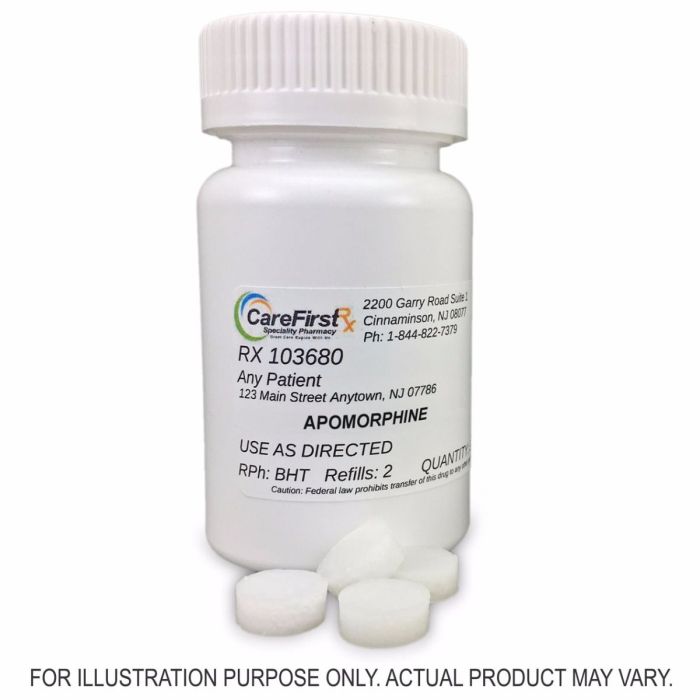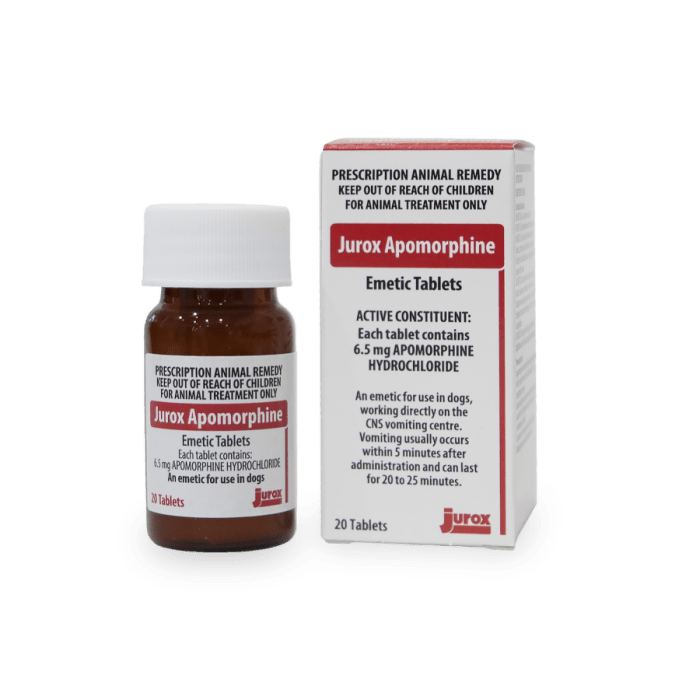Apomorphine, a synthetic dopamine agonist, has captivated the scientific community for decades with its unique properties and potential therapeutic benefits. This remarkable drug, derived from the opium poppy, has found its way into various medical fields, offering hope for individuals struggling with conditions like Parkinson’s disease and erectile dysfunction.
Its mechanism of action revolves around stimulating dopamine receptors in the brain, leading to a cascade of effects that can alleviate symptoms, improve motor function, and enhance overall well-being. However, apomorphine’s journey has not been without its challenges. Understanding its pharmacokinetics, potential side effects, and interactions with other medications is crucial for safe and effective use. This comprehensive exploration delves into the multifaceted nature of apomorphine, examining its history, therapeutic applications, and the ongoing research that continues to unveil its potential.
Research and Development
Apomorphine, a dopamine agonist, has shown promise in treating various medical conditions, and ongoing research is exploring its potential further. Researchers are investigating new formulations and delivery systems to improve its effectiveness and address limitations associated with current methods.
Ongoing Research
Apomorphine research is actively exploring its therapeutic potential for various conditions beyond its current use for Parkinson’s disease. This includes investigating its efficacy in treating:
- Erectile Dysfunction: Studies are exploring apomorphine’s potential as a treatment for erectile dysfunction, particularly for men who do not respond well to other therapies. Apomorphine’s ability to stimulate dopamine receptors in the brain may contribute to its effectiveness in this area.
- Addiction: Research is underway to examine apomorphine’s potential for treating addiction to substances like alcohol and opioids. Apomorphine’s ability to modulate dopamine pathways in the brain, which are implicated in addiction, suggests potential therapeutic benefits.
- Neurological Disorders: Research is ongoing to explore apomorphine’s potential for treating other neurological disorders like restless legs syndrome, Tourette syndrome, and even certain types of dementia.
- Other Conditions: Researchers are investigating apomorphine’s potential in treating conditions like fibromyalgia, chronic fatigue syndrome, and even certain types of cancer.
Legal and Regulatory Aspects
Apomorphine, like any other pharmaceutical drug, is subject to strict legal and regulatory frameworks worldwide. The legal status and regulatory requirements surrounding its manufacture, distribution, and use vary significantly across different countries. Additionally, ethical considerations play a crucial role in the responsible and safe use of this potent medication.
Legal Status of Apomorphine
The legal status of apomorphine varies across different countries. In many countries, it is classified as a controlled substance due to its potential for abuse. The legal status of apomorphine is typically categorized under specific drug control legislation, such as the Controlled Substances Act in the United States or the Misuse of Drugs Act in the United Kingdom.
- United States: Apomorphine is classified as a Schedule III controlled substance under the Controlled Substances Act (CSA). This classification reflects its potential for abuse, although it is considered to be less addictive than Schedule II drugs.
- European Union: Apomorphine is classified as a Schedule II drug under the European Union’s Drug Classification System. This classification indicates that apomorphine has a high potential for abuse and dependence.
- Australia: Apomorphine is classified as a Schedule 8 drug under the Poisons Standard (Drugs and Poisons) Regulations 2018. This classification indicates that apomorphine is a controlled drug with a high potential for abuse and dependence.
Regulatory Requirements for Apomorphine
The regulatory requirements for the manufacture, distribution, and use of apomorphine are stringent to ensure its safe and effective use. Regulatory bodies worldwide have established specific guidelines and protocols to govern these aspects.
- Manufacture: The manufacture of apomorphine is subject to strict regulations that cover aspects such as manufacturing processes, quality control, and Good Manufacturing Practices (GMP). These regulations aim to ensure the purity, potency, and safety of the manufactured drug.
- Distribution: The distribution of apomorphine is tightly controlled, with regulations governing the storage, transportation, and dispensing of the drug. These regulations aim to prevent diversion and misuse of the drug.
- Use: The use of apomorphine is typically restricted to licensed healthcare professionals, such as physicians and pharmacists. Patients must have a valid prescription from a healthcare professional to obtain and use apomorphine.
Ethical Considerations
The use of apomorphine raises ethical considerations, particularly regarding its potential for abuse and dependence. It is crucial to ensure that apomorphine is used responsibly and ethically to minimize potential harm to patients.
- Informed Consent: Patients should be fully informed about the potential risks and benefits of apomorphine treatment before initiating therapy. Informed consent is crucial to ensure that patients understand the potential consequences of using the drug.
- Monitoring and Surveillance: Regular monitoring and surveillance of patients receiving apomorphine treatment are essential to identify and manage potential side effects or signs of abuse.
- Access and Equity: Ensuring equitable access to apomorphine treatment for patients who need it while minimizing the risk of abuse is a complex ethical challenge.
Patient Education and Counseling

This section will provide you with essential information about apomorphine, including its purpose, how to use it, and potential side effects. It also includes a guide for healthcare professionals to use when discussing apomorphine with patients. Understanding this information is crucial for ensuring the safe and effective use of apomorphine.
Patient Information Leaflet, Apomorphine
This leaflet provides essential information about apomorphine. It is important to read this leaflet carefully before you start using apomorphine and each time you get a refill. If you have any questions, be sure to ask your doctor or pharmacist.
Purpose
Apomorphine is a medication used to treat Parkinson’s disease. It works by increasing the levels of dopamine in the brain. Dopamine is a chemical messenger that helps control movement.
How to Use
Apomorphine is available as an injection or a subcutaneous infusion. Your doctor will determine the best way to administer apomorphine based on your individual needs.
Dosage
The dosage of apomorphine will vary depending on your individual needs. Your doctor will determine the appropriate dosage for you.
Administration
Apomorphine should be administered as directed by your doctor.
Potential Side Effects
Like all medications, apomorphine can cause side effects. Some common side effects include:
- Nausea
- Vomiting
- Dizziness
- Low blood pressure
- Yawning
More serious side effects can occur, including:
- Hallucinations
- Confusion
- Seizures
- Sudden death
If you experience any of these side effects, contact your doctor immediately.
Precautions
Apomorphine should not be used by people who are allergic to it. It should also not be used by people with certain medical conditions, such as:
- Severe heart problems
- Severe liver problems
- Severe kidney problems
Apomorphine can interact with other medications. Be sure to tell your doctor about all the medications you are taking, including over-the-counter medications and herbal supplements.
Storage
Store apomorphine at room temperature, away from light and moisture. Keep apomorphine out of reach of children.
Counseling Guide for Healthcare Professionals
This guide provides healthcare professionals with information on how to counsel patients about apomorphine. It emphasizes the importance of patient education and adherence to medication regimens.
Patient Education
Patient education is crucial for the safe and effective use of apomorphine. It is essential to discuss the following with patients:
- The purpose of apomorphine
- How to use apomorphine
- Potential side effects of apomorphine
- Precautions to take when using apomorphine
- The importance of adherence to medication regimens
Patient Adherence
Patient adherence to medication regimens is essential for achieving optimal therapeutic outcomes. Healthcare professionals should counsel patients on the importance of taking apomorphine as prescribed and monitoring for any potential side effects. They should also address any concerns or questions patients may have about apomorphine.
Patient Monitoring
It is important to monitor patients closely for any signs of side effects or complications. Patients should be instructed to report any unusual symptoms to their healthcare provider immediately.
Patient Support
Patients may need support in managing their Parkinson’s disease and adhering to their medication regimen. Healthcare professionals should provide patients with information about resources that can help them, such as support groups or counseling services.
Patient Empowerment
Patient empowerment is crucial for achieving optimal therapeutic outcomes. Healthcare professionals should encourage patients to be active participants in their own care. They should provide patients with the information and support they need to make informed decisions about their treatment.
Apomorphine in Popular Culture

Apomorphine, a potent dopamine agonist, has made its way into the realm of popular culture, albeit often in a sensationalized or misrepresented manner. Its presence in movies, television shows, and literature has contributed to the public’s perception of this drug, often portraying it as a powerful and dangerous substance.
Portrayal of Apomorphine in Media
The portrayal of apomorphine in media has largely focused on its use as a powerful stimulant, often associated with illicit activities and criminal behavior. This portrayal is largely driven by the drug’s ability to induce a state of euphoria and heightened arousal.
- In the film “Fight Club,” apomorphine is depicted as a “miracle drug” that can enhance physical performance and suppress pain. This portrayal, while fictional, reinforces the notion that apomorphine is a powerful and dangerous substance that can be used to achieve superhuman feats.
- In the television series “Breaking Bad,” apomorphine is used by the main character, Walter White, to treat his Parkinson’s disease. However, the show also depicts the drug as being highly addictive and capable of causing dangerous side effects.
- In the novel “Fear and Loathing in Las Vegas,” apomorphine is mentioned as a powerful drug that can induce hallucinations and alter perceptions. This portrayal, while fictional, contributes to the public perception of apomorphine as a dangerous and unpredictable substance.
Apomorphine stands as a testament to the continuous evolution of medical science, a drug that has emerged from the depths of natural compounds to become a valuable tool in the treatment of various conditions. While its applications continue to expand, ongoing research remains crucial for optimizing its efficacy and minimizing potential risks. As we move forward, a deeper understanding of apomorphine’s complexities will pave the way for innovative therapeutic strategies and improved patient outcomes.
Apomorphine is a medication used to treat Parkinson’s disease, but it’s important to note that it can interact with other medications. For example, if you’re taking ezetimibe 10 mg to lower cholesterol, it’s crucial to discuss this with your doctor before starting apomorphine therapy. This is because the combination could potentially lead to unexpected side effects.